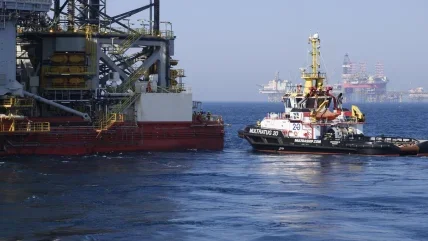
BP has announced it will reduce its workforce by more than 5% as part of a global restructuring initiative aimed at cutting costs and streamlining operations.
The decision, disclosed in an internal memo seen by Reuters, reflects CEO Murray Auchincloss’ focus on achieving $2bn in cost savings by the end of 2026.
The oil and gas major plans to eliminate approximately 4,700 employee roles and 3,000 contractor positions this year, the publication reported. These reductions follow a comprehensive review of BP’s divisions as the company seeks to improve efficiency and address concerns related to its energy transition strategy.
BP employs roughly 90,000 people worldwide, with further details on the specific breakdown of job cuts not yet disclosed.
In a separate memo, Emeka Emembolu, BP’s head of technology, informed his team that around 1,100 roles in his division would be impacted, as per the Reuters report. The changes include redundancies and relocating certain roles from the UK and the US to lower-cost locations, such as Hungary, India, and Malaysia.
Auchincloss, in the internal memo, wrote: “We have got more we need to do through this year, next year and beyond, but we are making strong progress as we position BP to grow as a simpler, more focused, higher-value company,”
The restructuring follows Auchincloss’ appointment as CEO in 2023 after Bernard Looney resigned amid allegations of failing to disclose relationships with employees. Looney’s departure left Auchincloss to address investor concerns regarding BP’s performance and energy transition strategy.
Earlier this week, BP released a trading statement for Q4 2024, outlining expected performance across its key business segments. The update detailed declines in upstream production and variations in financial performance across its operations.
Upstream production is projected to decrease compared to the prior quarter, with lower volumes reported in oil production and operations and in gas and low-carbon energy. In the gas and low-carbon energy segment, realisations are expected to improve by $100m–$200m, supported by changes in non-Henry Hub natural gas prices.
Gas marketing and trading results are anticipated to remain stable.
In the oil production and operations segment, realisations are forecast to fall by $200m–$400m due to price lags affecting BP’s operations in the Gulf of Mexico and the UAE. Exploration write-offs are expected to decrease by $100m–$200m compared to the previous quarter.
The customers and products segment is expected to report lower volumes and margins due to seasonal factors, foreign exchange losses, and an inventory adjustment linked to BP’s bio-ethanol acquisition. Refining margins are also forecast to weaken.
BP also announced progress in reducing its net debt, supported by $2.8bn in divestment proceeds and $2.5bn raised through the issuance of perpetual hybrid bonds. However, non-cash, post-tax impairment charges of $1bn-$2bn are expected across segments, with these charges excluded from underlying replacement cost profit.
The oil and gas producer revised its full-year guidance, raising its effective tax rate forecast to 42% from the previous estimate of 40%. This adjustment reflects changes in the geographical mix of profits.
In operational developments, BP reported progress at its GTA Phase 1 liquefied natural gas (LNG) project, located offshore Mauritania and Senegal. Gas is now flowing from the project’s wells to a floating production, storage, and offloading vessel for commissioning.
Once operational, GTA Phase 1 is expected to produce around 2.3 million tonnes of LNG annually.






